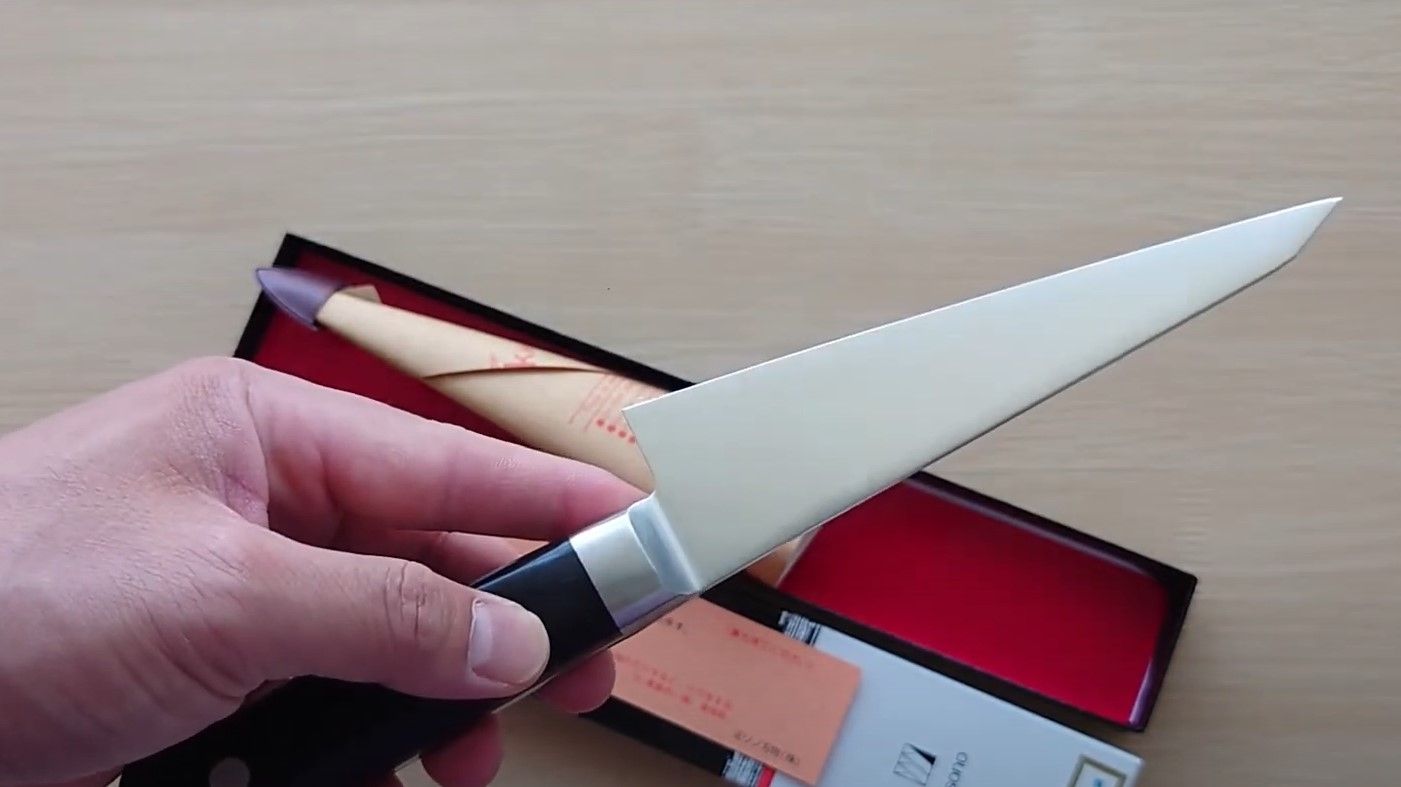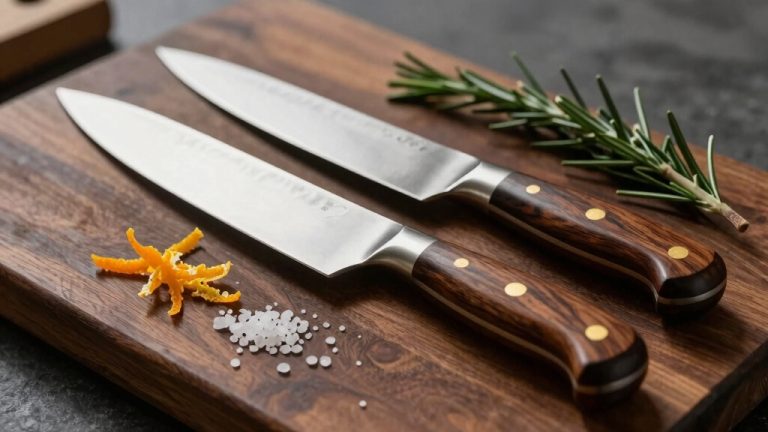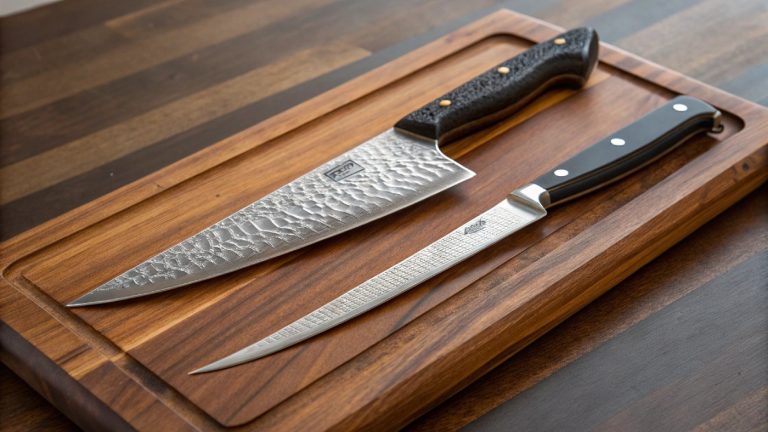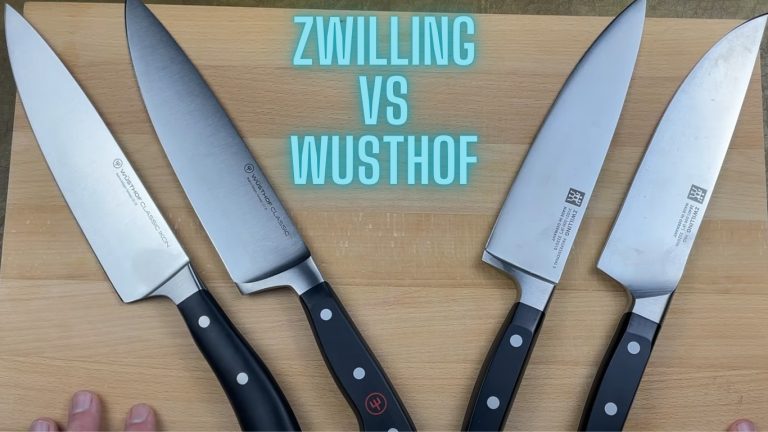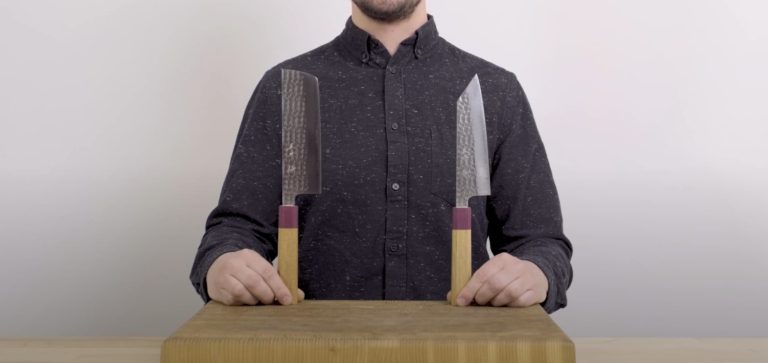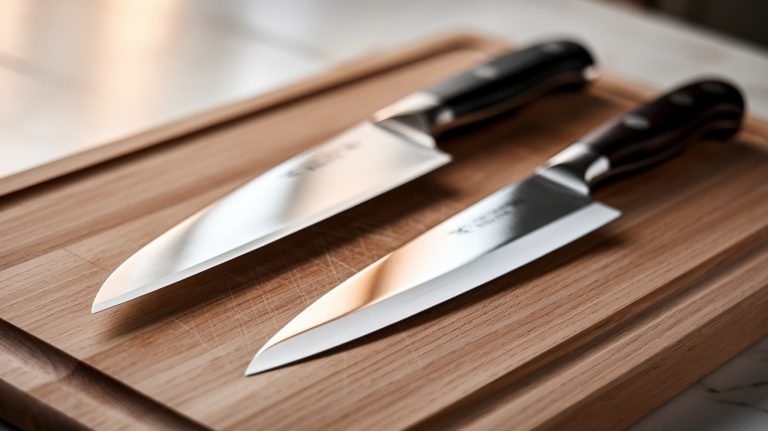Best Honesuki Knives for Precision Cutting in 2025
Looking for the best Honesuki knives for precision cutting in 2025? You’ve got options like the Tojiro Honesuki 6-inch for sharp, durable cuts, or the Shun Kanso 5-inch with its sleek design.
Don’t overlook the Shun Classic 4.5-inch for exceptional control, or the Dexter 8.5-inch for versatility.
From MASAMOTO VG to TAIE’s Sabaki, you’re covered for boning poultry with ease. Stick around to uncover deeper insights on choosing your perfect blade.
| Image | Name | Editor's Rating | Price |
|---|---|---|---|

|
Tojiro Honesuki 6-inches ,Right
|
|
|

|
Shun Kanso 5" Asian Multi-Prep Knife
|
|
|

|
TOJIRO Co, Ltd. Fujita Toru Production D...
|
|
|

|
Shun Classic 4 1/2" Honesuki Knife
|
|
|

|
RyoriNinja Dexter Fish Fillet Knife 8.5 ...
|
|
Key Takeaways
- Tojiro Honesuki 6-inches offers a sharp cobalt alloy blade for precise chicken boning.
- Shun Kanso 5 Asian Multi-Prep Knife features AUS10A steel for precision trimming with a Tagayasan handle.
- Shun Classic 4.5 Asian Multi-Prep Knife provides exceptional sharpness with VG-MAX steel and Damascus cladding.
- Dexter Fish Fillet Knife 8.5 inch ensures precision with a V-shaped high-carbon stainless steel edge.
- MASAMOTO VG Honesuki 5.7 inch combines lightweight design and high-carbon steel for accurate cutting.
Tojiro Honesuki 6-inches ,Right
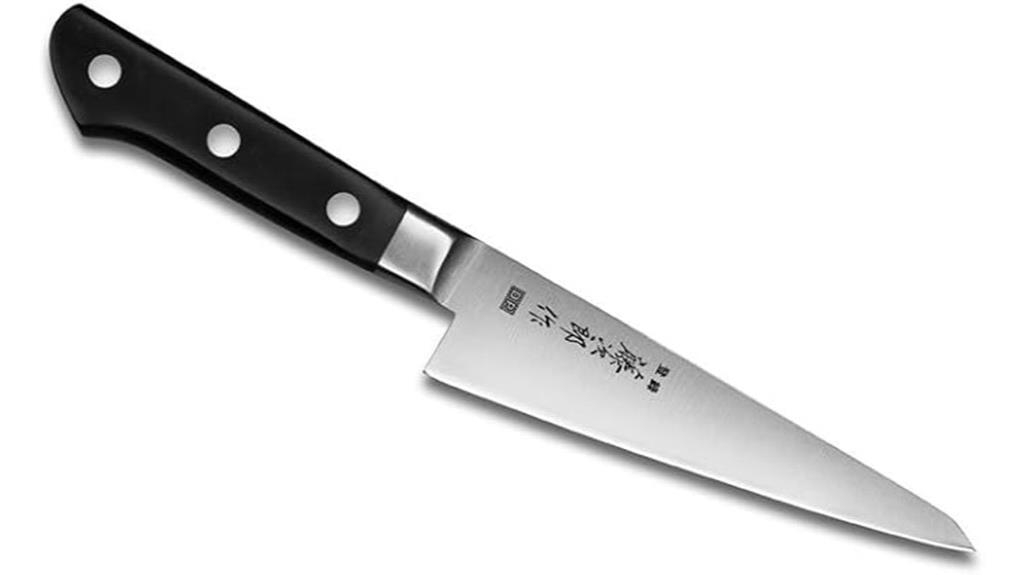
If you’re a home cook or professional chef seeking a reliable tool for precision tasks like boning chicken or cutting through joints, the Tojiro Honesuki 6-inches, Right, stands out with its cobalt alloy steel blade.
Weighing just 6.1 oz, this forged knife offers a 5.9-inch blade for sharp, controlled cuts. You’ll appreciate its durable black laminated wood handle, resistant to aging, and hygienic ferrules that keep dirt at bay.
Use it for delicate tasks like coring tomatoes or cutting veggies. Hand wash it to maintain its edge—honing with a 1000/6000 grit stone keeps it razor-sharp.
Best For: Home cooks and professional chefs who need a versatile, affordable knife for precision tasks like boning chicken and cutting through joints.
Pros:
- Offers excellent value for money, much cheaper than European counterparts.
- Durable cobalt alloy steel blade with a hygienic design that prevents dirt accumulation.
- Versatile for various kitchen tasks beyond boning, such as coring tomatoes and cutting vegetables.
Cons:
- Blade edge may not be as sharp out of the box compared to high-end models, requiring initial sharpening.
Shun Kanso 5 Asian Multi-Prep Knife
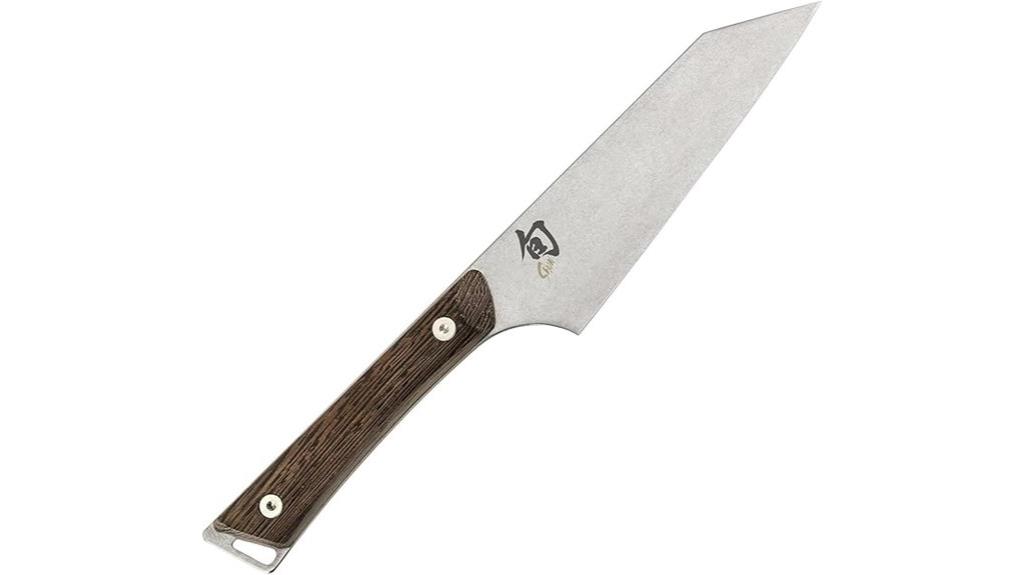
Discover the Shun Kanso 5-inch Asian Multi-Prep Knife, a masterful tool tailored for home cooks and professional chefs who demand precision around bones and joints. You’ll appreciate its compact design and versatility, as it doubles as a trimming, vegetable, and fruit knife.
Crafted from AUS10A high-carbon stainless steel with a razor-sharp 16-degree edge, it guarantees effortless cuts.
Its triangular blade and tagayasan wood handle offer comfort for both hands, while the butt doubles as a bottle opener.
Best For: Home cooks and professional chefs seeking a compact, versatile knife for precise boning and multi-purpose kitchen tasks.
Pros:
- Exceptional sharpness with a 16-degree edge for effortless cutting.
- Versatile design suitable for boning, trimming, and preparing vegetables and fruits.
- Handcrafted in Japan with high-quality AUS10A stainless steel for durability.
Cons:
- Not dishwasher safe, requiring hand washing for maintenance.
TOJIRO DP Boning Kitchen Knife 150mm (FU-803)
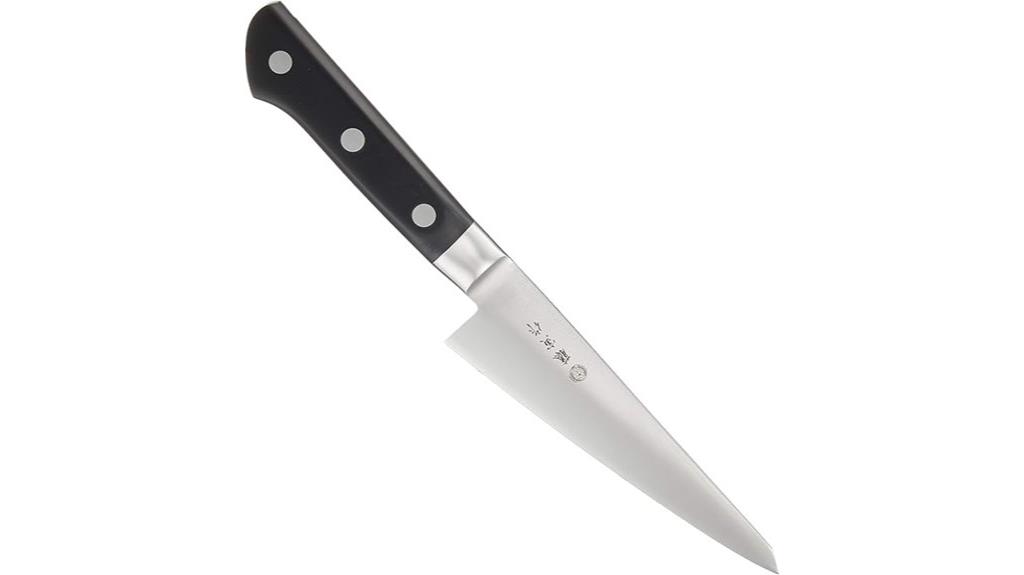
Plunge into the world of precision cutting with the TOJIRO DP Boning Kitchen Knife 150mm (FU-803), a stellar choice for enthusiasts and professionals who tackle butchering tasks like deboning chicken or filleting fish.
Crafted in Japan with cobalt alloy and stainless steel, this forged blade offers exceptional sharpness and maneuverability around bones.
However, watch out for the handle’s sharp corner that might cause discomfort. Stick to butchering tasks, as it’s not suited for harder vegetables or general cooking.
Best For: Culinary enthusiasts and professionals who frequently handle butchering tasks like deboning chicken or filleting fish.
Pros:
- Exceptional sharpness and maneuverability for precise cuts around bones.
- High-quality forged blade made from cobalt alloy and stainless steel for durability.
- Well-balanced design, ideal for preparing raw pet food with ease.
Cons:
- Handle design includes a sharp corner that may cause discomfort during prolonged use.
Shun Classic 4.5 Asian Multi-Prep Knife

Immerse yourself in precision with the Shun Classic 4.5 Asian Multi-Prep Knife, a standout choice for home chefs and professionals who demand exceptional control when boning poultry or trimming meats.
You’ll love its 4.5-inch triangular blade, crafted from VG-MAX steel with 68 layers of Damascus cladding, ensuring lasting sharpness at a 16-degree edge.
Feel the comfort of the D-shaped Pakkawood handle, fitting securely for both hands. Handcrafted in Japan, it excels at maneuvering around bones and joints. While perfect for chickens and lamb, it’s not for hard bones.
Best For: Home chefs and professionals seeking precision and control in boning poultry and trimming meats.
Pros:
- Exceptional sharpness with a 16-degree edge for precise cuts.
- Comfortable D-shaped Pakkawood handle suitable for both left and right-handed users.
- High-quality VG-MAX steel with Damascus cladding ensures durability and lasting performance.
Cons:
- Not suitable for cutting through hard bones, limiting its versatility.
- Requires careful maintenance as it is not dishwasher safe.
Dexter Fish Fillet Knife 8.5 inch Japanese Steel Honesuki
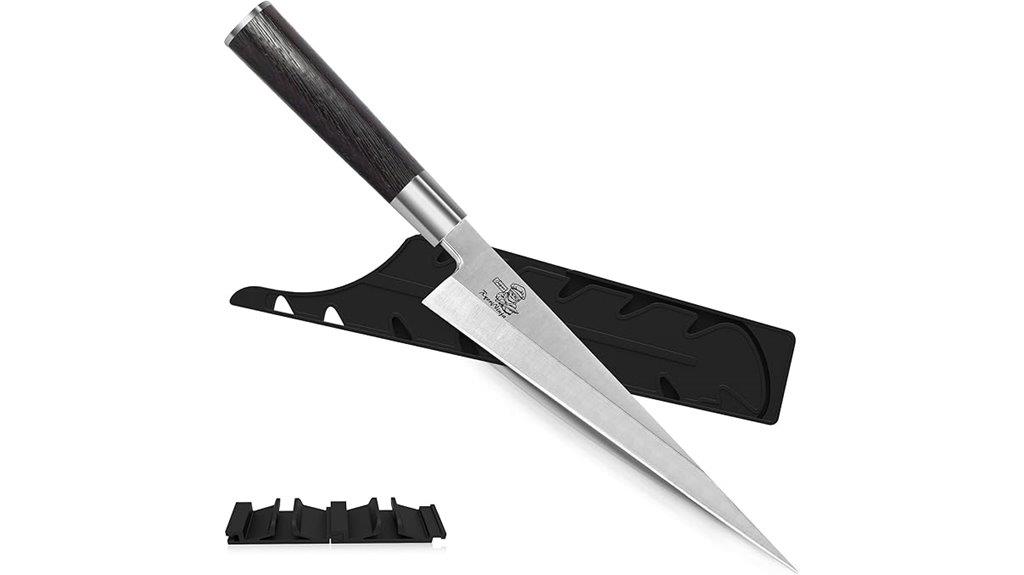
Take a closer look at the Dexter Fish Fillet Knife 8.5 inch Japanese Steel Honesuki, a top pick for professional chefs and home cooks who crave precision in every cut.
Crafted from Japanese high-carbon stainless steel, its 8.5-inch blade offers sharpness honed at 12-15° for effortless slicing. You’ll love the V-shaped edge for thin cuts and the sakura wood handle for a secure grip.
Best For: Professional chefs and home cooks seeking a high-quality, precise fillet knife for fish, meat, and vegetable preparation.
Pros:
- Exceptional sharpness with a 12-15° honed blade for effortless, precise cuts.
- Ergonomic sakura wood handle provides a secure and comfortable grip.
- Durable Japanese high-carbon stainless steel ensures long-term sharpness and rust resistance.
Cons:
- At 15.2 ounces, it may feel heavy for prolonged use by some individuals.
Misono Molybdenum Steel Boning Knife (No. 541)
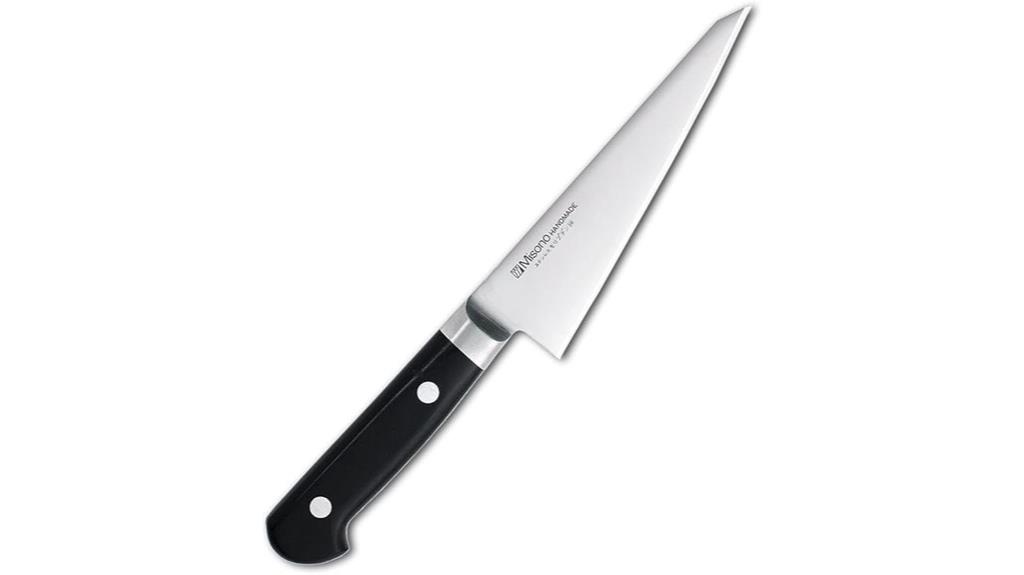
Discover the Misono Molybdenum Steel Boning Knife (No. 541), a precision tool crafted for chefs and home cooks who demand excellence in deboning and fine meat cutting.
Made in Japan, this Kanto-style knife boasts a 5.7-inch blade of high-grade 13 chrome stainless steel, ensuring sharpness and rust resistance.
You’ll appreciate its 6.3 oz weight and black reinforced wood handle for balanced control. Perfect for cutting meat from bone or handling birds, it’s not suited for frozen or hard items.
Best For: Chefs and home cooks seeking a high-quality, precise tool for deboning and fine meat cutting.
Pros:
- Exceptional sharpness and rust resistance due to high-grade 13 chrome stainless steel.
- Balanced control with a lightweight 6.3 oz design and ergonomic black reinforced wood handle.
Cons:
- Not suitable for cutting frozen or hard items like bones, limiting versatility.
- Requires regular honing and manual sharpening to maintain its edge, which may be time-consuming.
Chef Boning Knife 6.5 Inch Japanese Honesuki Sabaki Knife
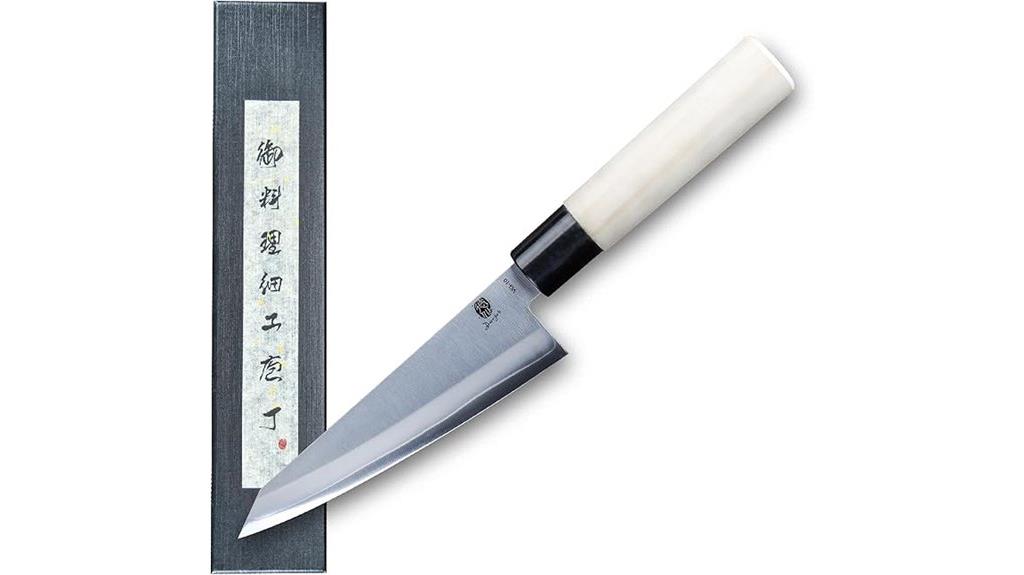
Precision seekers, meet the Chef Boning Knife 6.5 Inch Japanese Honesuki Sabaki Knife, a top pick for anyone craving exceptional sharpness in the kitchen.
With a VG-10 stainless steel core in San Mai construction, this 6.5-inch blade boasts a 62 HRC hardness, slicing through meat and veggies effortlessly. You’ll love its lightweight 3.2-ounce design for easy handling, though it’s not full tang.
The traditional Japanese handle, advertised as birch but often pine, demands care—hand wash and oil it regularly.
Best For: Precision-driven home cooks and professional chefs seeking a lightweight, razor-sharp boning knife for intricate meat and vegetable cuts.
Pros:
- Exceptional sharpness with VG-10 steel core and 62 HRC hardness for effortless slicing.
- Lightweight at 3.2 ounces, offering easy maneuverability and control.
- Rust-resistant blade ensures long-lasting performance with proper care.
Cons:
- Not full tang, which may impact overall strength and balance over time.
- High maintenance required, including hand washing and regular oiling of the handle.
MASAMOTO VG Japanese Honesuki Boning Knife 5.7 (145mm)
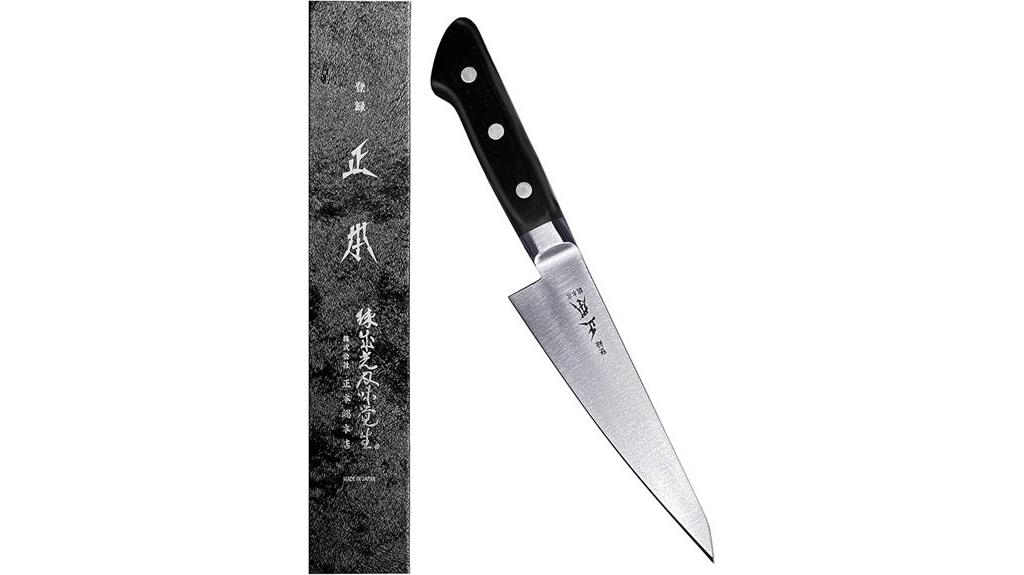
If you’re a home cook or professional chef seeking unmatched accuracy in de-boning poultry or filleting fish, the MASAMOTO VG Japanese Honesuki Boning Knife 5.7 (145mm) stands out as a stellar choice.
Crafted in Japan with over 150 years of MASAMOTO-SOHONTEN heritage, this forged knife boasts a sharp, durable edge made from high carbon stainless steel (HRC 58-59).
You’ll appreciate its lightweight 6.2-ounce design and thinner blade for precision tasks like breaking down poultry or filleting meat. The full tang POM Duracon handle offers a comfy grip, though some note packaging issues upon delivery.
Best For: Home cooks and professional chefs who need a precise and durable knife for de-boning poultry and filleting fish.
Pros:
- Exceptional sharpness and durability with a high carbon stainless steel blade (HRC 58-59).
- Lightweight at 6.2 ounces with a thinner blade for precision cutting tasks.
- Comfortable full tang POM Duracon handle designed for easy gripping.
Cons:
- Relatively high price point compared to other boning knives in the market.
Chef Boning Knife 6.5 Inch Japanese Honesuki Sabaki Knife
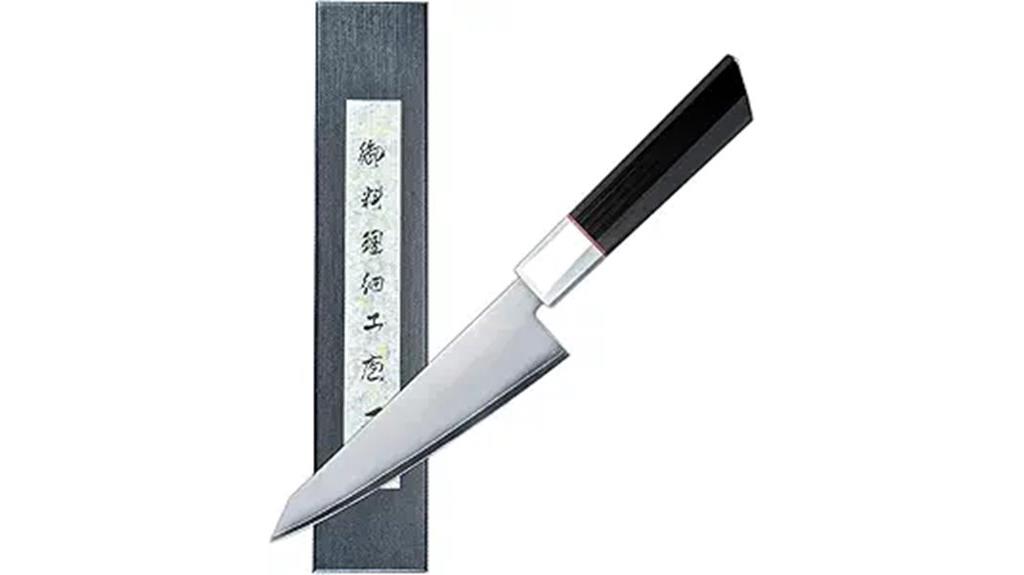
Looking for a reliable tool to master precision cutting in the kitchen? Check out the Chef Boning Knife 6.5 Inch Japanese Honesuki Sabaki Knife by TAIE. Its 6.5-inch blade, crafted from San Mai steel with a 9Cr18Mov stainless steel core, boasts a 62 HRC hardness for exceptional durability and sharpness.
You’ll appreciate the traditional Japanese octagon G10 handle, offering a secure grip and resistance to moisture. Sharpened by a master, it’s perfect for boning tasks like breaking down chickens.
Best For: Those who need a high-quality, precise boning knife for tasks like breaking down poultry or other meats with ease.
Pros:
- Exceptional sharpness and durability with a 62 HRC San Mai steel blade.
- Comfortable and secure grip with a traditional Japanese octagon G10 handle.
Cons:
- Limited blade length of 6.5 inches may not suit larger cutting tasks.
How to Choose the Right Honesuki Knife for Precision Butchery?
When picking out a Honesuki knife, you’ve gotta think about key aspects like blade material quality, handle comfort design, and edge sharpness retention.
Make sure you also consider the knife’s weight balance, as it affects your control during precision cuts. Don’t overlook the maintenance ease level either, since it’ll impact how long your knife stays in top shape.
Blade Material Quality
As you explore the best honesuki knives for precision cutting, you’ll quickly notice that blade material quality plays a critical role in performance. The material affects sharpness, edge retention, and maintenance ease.
Opt for high-carbon stainless steels if you’re seeking durability and solid performance. For premium options, look at cobalt alloy steel—it boosts sharpness and longevity while resisting corrosion.
Also, check for chromium in stainless steel blades; it enhances rust and stain resistance, ideal for kitchen use. Aim for a Rockwell hardness of 58-62 to guarantee a sharp edge with lasting toughness.
Handle Comfort Design
Beyond the blade’s quality, you’ll want to pay close attention to handle comfort design when picking a honesuki knife.
A well-shaped handle prevents hand fatigue and boosts grip stability during detailed tasks. Look for materials like laminated wood or synthetic composites that offer durability and resist moisture or temperature shifts.
Ensure the design suits both left- and right-handed users with ergonomic contours for a secure hold, minimizing slip risks. Check the weight distribution too; a balanced knife enhances control and maneuverability.
Avoid handles that are overly rough or poorly shaped, as they can cause discomfort or blisters over time. Opt for smooth finishes and thoughtful curves to keep your hand comfortable during extended use.
Edge Sharpness Retention
While handle design matters, you can’t overlook edge sharpness retention when selecting a honesuki knife.
The blade material greatly impacts this, so opt for high-carbon stainless steel for superior sharpness and durability over lower-grade options. Check the blade’s hardness on the Rockwell scale; aim for 58-62 HRC to guarantee the edge lasts longer.
Additionally, consider the blade’s edge geometry—a narrower angle like 16 degrees offers incredible sharpness but may dull quicker than wider angles. Don’t skip regular maintenance; honing with a whetstone keeps your knife cutting effortlessly and reduces wear.
Knife Weight Balance
Let’s shift focus from edge sharpness to another key aspect of a honesuki knife: its weight balance. When you’re cutting around bones and joints, a well-balanced knife gives you control and maneuverability. Look for one where the weight feels evenly distributed between the blade and handle to avoid wrist strain.
You’ll find honesuki knives ranging from light (about 6 ounces) for agility to heavier (up to 8 ounces) for stability and force. The construction matters too—forged knives often offer better balance due to denser materials compared to stamped ones.
A balanced knife can boost your cutting performance and cut down on fatigue during long sessions. So, prioritize weight balance when picking your ideal honesuki knife for precision tasks.
Maintenance Ease Level
As you narrow down your choice of honesuki knife, consider the ease of maintenance to guarantee it fits your lifestyle. Opt for stainless steel blades if you’re after low upkeep, as they resist rust better than high-carbon steel, which demands regular oiling.
Look for laminated or hybrid constructions, like cobalt alloy with chrome stainless steel, for a solid mix of sharpness and easy care.
Task Versatility Range
Beyond maintenance, you’ll want to think about the task versatility range when picking a honesuki knife. These knives shine in boning poultry, letting you navigate bones and joints with precision.
But they’re not one-trick ponies—many, especially those with 5 to 6-inch blades, handle trimming vegetables and fruits just as well. You can also use some models for delicate tasks like coring tomatoes or slicing thin cuts of meat.
Their triangular blade shape boosts maneuverability, making them handy for various kitchen jobs beyond boning.
Plus, with quality honesuki knives, you’ll find they stay sharp with minimal effort, ensuring consistent performance across different cooking tasks.
Frequently Asked Questions
What Is a Honesuki Knife Used For?
Hey, do you know what a honesuki knife is used for? Grab one, and you’ll see it’s perfect for precision tasks in the kitchen. You’ll use it mainly for deboning poultry, cutting through joints, and trimming meat with ease.
Its sharp, triangular blade lets you maneuver tight spots effortlessly. Whether you’re prepping chicken or fish, you’ve got control and accuracy. It’s a must-have tool for detailed work!
How Do I Sharpen a Honesuki Knife?
Hey, let’s talk about how you sharpen a Honesuki knife. Grab a whetstone, soak it in water for about 10 minutes, and place it on a stable surface. Hold your knife at a 15-20 degree angle, then slide the blade across the stone with steady pressure.
Repeat on both sides until it’s razor-sharp. Don’t rush—take your time to maintain that edge. Rinse and dry your knife afterward!
Can Honesuki Knives Cut Through Bone?
Did you know that over 60% of professional chefs rely on specialized knives for tricky cuts? Now, let’s tackle if honesuki knives can cut through bone. You’ll find they’re designed for precision, not power.
They excel at deboning and slicing meat, but don’t force ‘em through tough bone—stick to a cleaver for that. Use your honesuki for finesse tasks, and you’ll keep its edge sharp and effective!
Are Honesuki Knives Suitable for Beginners?
Hey, are honesuki knives suitable for beginners like you? Absolutely, they can be, if you’re willing to learn! You’ve gotta start with proper grip and technique to handle their unique triangular blade safely. They’re great for precision tasks, but don’t rush—practice on softer cuts first.
With patience, you’ll master deboning and trimming. Just remember, they’re specialized, so pair them with a versatile knife for everyday stuff. Keep practicing!
How Should I Store a Honesuki Knife?
Hey, let’s talk about how you should store a honesuki knife to keep it sharp and safe. Always clean and dry it after use to prevent rust.
Store it in a knife block or on a magnetic strip to avoid blade damage. Don’t toss it in a drawer where it can get nicked. If you’re using a sheath, make sure it’s secure. Protect your knife, and it’ll last longer!
Master the Blade, Master the Craft
As you journey through the kitchen, think of your honesuki knife as a trusted compass, guiding you through the wild terrain of meat and bone.
You’ve got the power to carve your path with precision, so choose wisely among these nine blades. Let each cut be a step toward mastery, slicing through challenges with clarity.
Don’t just cook—navigate life’s complexities with the sharp focus only a true honesuki can provide.

